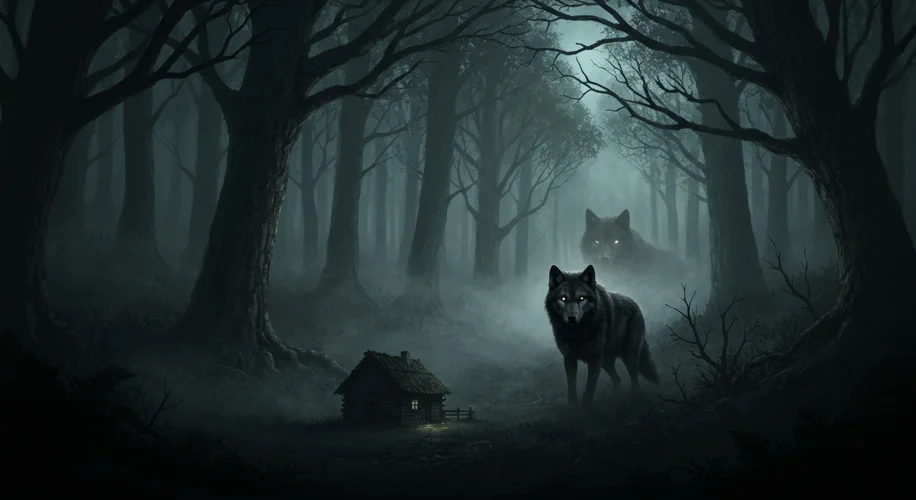The huffing and the puffing, the big bad wolf… these phrases echo through childhood memories, conjuring images of cunning predators in fairy tales. But how much of this fearsome reputation was rooted in reality for the people of Germany? The wolf, a creature often relegated to the realm of myth and cautionary fables, was once a very real, and often terrifying, presence in the lives of rural Germans.
A Europe Reclaimed by the Wild
To understand the wolf’s place in German folklore, we must first rewind the clock. Imagine Central Europe not as a landscape of neat farms and bustling cities, but as a much wilder, untamed place. Historical estimates suggest that by the late Middle Ages and into the early modern period, wolf populations in Central Europe were at their zenith. These were not scattered packs; these were thriving, widespread communities of apex predators that roamed vast territories. Driven by hunger and the availability of prey, which often included livestock vital to human survival, wolves were a constant concern for communities that lived on the fringes of their domain.

Fear in the Timid Hearth
The fear was palpable. For the rural communities of Germany, particularly in the more forested and mountainous regions, a wolf sighting was not a romantic encounter with nature; it was a potential threat to life and livelihood. Livestock – sheep, goats, cattle – were the backbone of many a peasant family’s economy. A single wolf pack could decimate a flock overnight, plunging a family into destitution. Beyond livestock, there are documented accounts and widespread fear of wolves attacking humans, especially children and the elderly who were more vulnerable.
Stories of wolf attacks, whether exaggerated or factual, would have spread like wildfire. These narratives, passed down through generations, cemented the wolf’s image as a relentless antagonist. In a time before organized hunting parties with firearms were commonplace, and when settlements were more isolated, the wolf represented a primal, untamed force that humanity had to contend with.
The Wolf in the Storybook Mirror
It is within this context of real-world fear and interaction that the wolf became a central figure in German folklore and, most famously, in children’s stories. The Brothers Grimm, whose collected tales have shaped global perceptions of fairy tales, drew heavily on the oral traditions of German-speaking regions. Their stories, while entertaining, often served as a vehicle for transmitting cultural anxieties and lessons.
Think of “Little Red Riding Hood.” The innocent girl, venturing through the woods, encounters a wolf who, through deceit, aims to consume her. The wolf isn’t just a wild animal; he’s a cunning deceiver, a predator that preys on naiveté. Or “The Wolf and the Seven Young Goats,” where the wolf’s disguise and trickery lead to the near demise of the young goats, only to be foiled by their clever mother. These narratives aren’t just whimsical tales; they are allegories reflecting the very real dangers that wolves posed to vulnerable members of society.
The wolf in these stories embodies not just a physical threat, but also the dangers of the unknown and the untamed wilderness. The forest, often depicted as a place of both wonder and peril, is the wolf’s domain. When children were warned not to stray too far from home, or to be wary of strangers, the wolf was the ultimate symbol of what lay beyond the safety of the village or hearth.
The Decline of the Wild and the Rise of the Legend
As human populations grew and hunting technologies improved, the wolf population in Germany began a long, steady decline. Organized wolf hunts, often encouraged by bounties offered by local authorities, systematically reduced their numbers. By the 19th century, wolves were largely eradicated from many parts of Germany. The last wild wolf was officially recorded in Prussia in 1847.
With their physical presence diminished, the wolf’s reign shifted almost entirely to the realm of folklore. The fear, however, lingered in collective memory, providing fertile ground for the continued retelling of old tales and the creation of new ones. The wolf became a convenient antagonist, a perfect foil for brave heroes and clever heroines.
Today, as wolves are slowly returning to parts of Germany, there’s a fascinating duality at play. On one hand, there’s a romanticized view, a desire to see nature reclaim its spaces. On the other, echoes of that ancient fear persist, a testament to the profound impact this predator once had on the German landscape and imagination. The wolf, once a genuine terror lurking in the dark woods, has been transformed into a powerful symbol, forever etched in the stories we tell our children, a reminder of a time when the wild was a much more immediate and dangerous neighbor.

